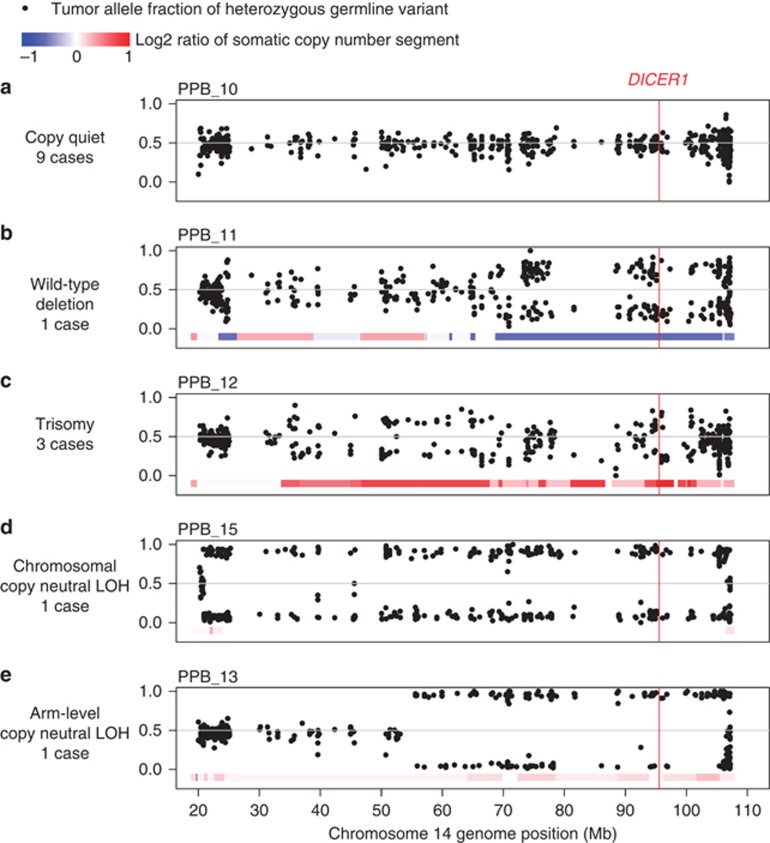Figure 3.
Somatic chromosome 14 copy-number segments and allele fractions of variants heterozygous in matched normal. Data points are the tumor allele fractions of heterozygous, non-reference alleles in the matched normal sample. Somatic deletion of the non-reference allele results in tumor allele fractions near 0, whereas gain of the non-reference base or deletion of the reference base results in values approaching 1. Colored bars represent copy-number states inferred from fractional coverage values. Each panel depicts different combinations of copy-number alteration and loss-of-heterozygosity detected by whole exome sequencing. (a) Copy quiet: Compound germline loss-of-function (LOF) and somatic RNase IIIb missense mutation without further copy-number alteration (nine cases). (b) Wild-type deletion: Deletion of wild-type allele resulting in hemizygosity for the somatic RNase IIIb missense mutation (PPB_11). (c) Trisomy: Copy-number gain of chromosome 14 resulting in duplication of RNase IIIb mutant allele and retention of germline LOF allele (two cases). An additional case has duplication of the germline LOF allele and retention of the RNase IIIb mutant allele (PPB_5). (d) Chromosomal copy neutral loss-of-heterozygosity: Copy-neutral loss of wild-type allele and duplication of entire chromosome 14 containing the somatic RNase IIIb missense mutation (PPB_15). (e) Arm-level copy neutral loss-of-heterozygosity: Copy-neutral loss of wild-type allele and duplication of 14q containing the somatic RNase IIIb missense mutation (PPB_13).

